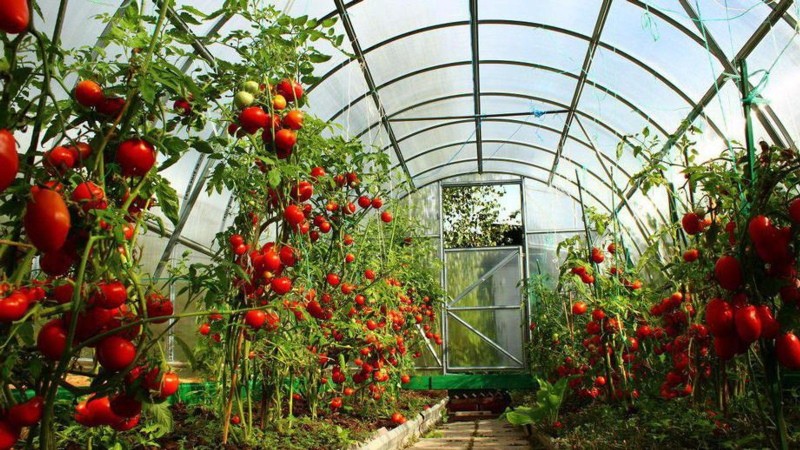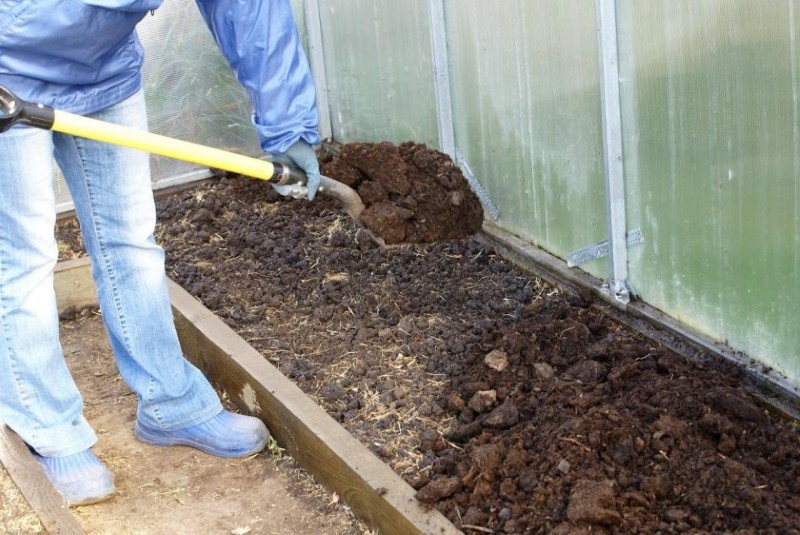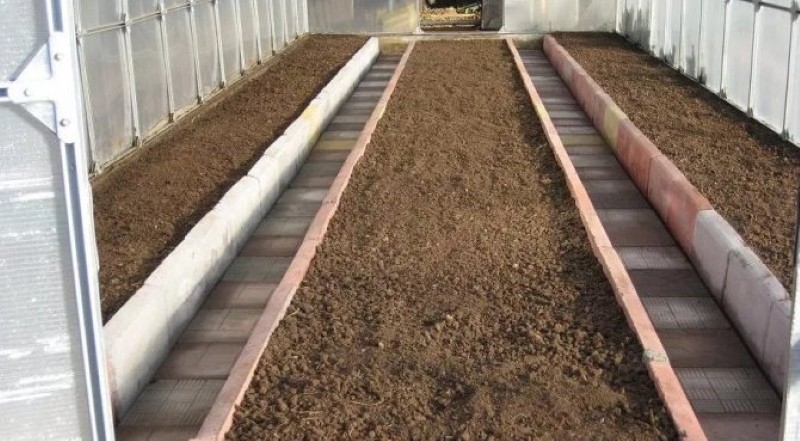How to get early vegetables and multi-growing tomatoes in a polycarbonate greenhouse
 Greenhouse tomatoes are the first to appear on sale in the spring, and if such a room is also heated, then they are on the shelves all year round. If there is a desire and opportunity, early vegetables can be obtained from their beds. And the most optimal solution would be to grow tomatoes in a polycarbonate greenhouse. Unlike film, polycarbonate is more durable, which means that such a greenhouse will last more than one year, provided it is properly constructed and operated. In addition, transparent sheets transmit sunlight well and do not overheat, but at the same time retain ultraviolet light. And the honeycomb material perfectly retains heat inside the room, so the plants are not afraid of return frosts. So, what should you consider if you decide to plant tomatoes in such a greenhouse?
Greenhouse tomatoes are the first to appear on sale in the spring, and if such a room is also heated, then they are on the shelves all year round. If there is a desire and opportunity, early vegetables can be obtained from their beds. And the most optimal solution would be to grow tomatoes in a polycarbonate greenhouse. Unlike film, polycarbonate is more durable, which means that such a greenhouse will last more than one year, provided it is properly constructed and operated. In addition, transparent sheets transmit sunlight well and do not overheat, but at the same time retain ultraviolet light. And the honeycomb material perfectly retains heat inside the room, so the plants are not afraid of return frosts. So, what should you consider if you decide to plant tomatoes in such a greenhouse?
Growing tomatoes in a polycarbonate greenhouse - soil preparation

If you have had a greenhouse for more than a year, do not forget to wash it inside well in the fall using disinfectants. This will help get rid of fungi that winter well in uncleaned rooms. If necessary, cover the metal frame with a fresh coat of paint to help extend the life of the greenhouse itself.
 In a new and not yet used greenhouse, you can also tackle the beds in the fall. It is most convenient to grow tomatoes in two-row beds, while it is desirable that they be high, about 40 cm from the soil level. This will help keep the thermophilic tomatoes from freezing. Make beds 1.5 m wide and long according to the size of the greenhouse. To make it easier to care for them, leave a distance between the rows at least 90 cm.
In a new and not yet used greenhouse, you can also tackle the beds in the fall. It is most convenient to grow tomatoes in two-row beds, while it is desirable that they be high, about 40 cm from the soil level. This will help keep the thermophilic tomatoes from freezing. Make beds 1.5 m wide and long according to the size of the greenhouse. To make it easier to care for them, leave a distance between the rows at least 90 cm.
What tomatoes are best planted in a greenhouse and how
 Considering that there will be no pollinating insects in the greenhouse, give preference to self-pollinated tomato varieties. It is better to choose the most resistant to diseases, as well as to high humidity. But about the size of the plants themselves, this is not at all important. You can plant low-growing tomatoes, but it is much more profitable to grow tall varieties in one or two stems. Taking up less space, they grow in height and give a rich harvest.
Considering that there will be no pollinating insects in the greenhouse, give preference to self-pollinated tomato varieties. It is better to choose the most resistant to diseases, as well as to high humidity. But about the size of the plants themselves, this is not at all important. You can plant low-growing tomatoes, but it is much more profitable to grow tall varieties in one or two stems. Taking up less space, they grow in height and give a rich harvest.
Most often, tomatoes are planted in greenhouses:
- Pink Mikado;
- King of Kings;
- Junior;
- El Dorado;
- Honey Savior;
- Virtuoso;
- Cardinal.
Features of caring for greenhouse tomatoes
 Do not rush to transplant tomato seedlings into the greenhouse early. If it is heated by you, then this can be done in the second half of April.Otherwise, transplant not earlier than the beginning of May, when the soil inside warms up to 15 ° C warm.
Do not rush to transplant tomato seedlings into the greenhouse early. If it is heated by you, then this can be done in the second half of April.Otherwise, transplant not earlier than the beginning of May, when the soil inside warms up to 15 ° C warm.
When growing, follow certain guidelines, namely:
- often ventilate the greenhouse and remove condensation;
- keep the temperature at least 20 ° C, and during the flowering period 23-25 ° C warm;
- be sure to remove stepsons;
- feed and water the beds.
If it's hot in the greenhouse, ventilate more often. You can raise the temperature by covering the beds with a thick layer of mulch. Or stretch a film over them on an additional frame.